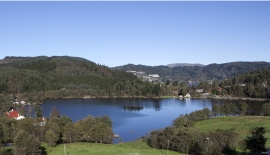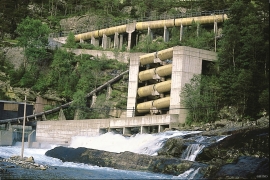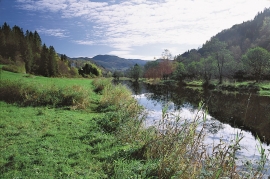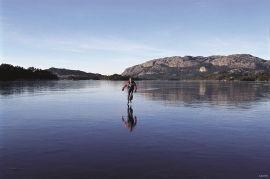- Remove Smallholdings filter Smallholdings
- Remove Fish filter Fish
- Remove Sedimentary rocks filter Sedimentary rocks



Skårsvatnet
In September, 1901, a load of golden orfe fish was transported from Preussen to Bergen for stocking of Nygårdspark. One of the originators of the project was the well known doctor Klaus Hanssen. Thirteen years later, Hansen was called to help. Would he please come to Øystese to assist the district doctor Peter Munch Søergaard in his attempt to combat tuberculosis in the village? Hanssen came - and had in his suitcase living "goldfish" from Nygårdsparken.

Trail toward Kyrkjedøri
Roughly 550 million years ago, what is now Finse lay at the bottom of the sea - the remains of mud and clay that were deposited in this sea have ended up on the roofs of Norway. Also the thrust sheet from the continental collision has found its way to Finse, after a several hundred kilometre-long, trek through the mountains, that took several tens of millions of years to complete.



Lonelva
It is said that the salmon populations with the largest and the smallest salmon in the world both come from the waters that run out into the fjord system around Osterøy. Vosso is supposed to have the largest spawning salmon to be found in any river, whereas Lonelva is said to have the smallest.

Lure Fjord
Both Lure Fjord and Lindåsosane to the inside give good living conditions for rare marine organisms: jellyfish, shellfish and fish. These include animals that migrated in after last the Ice Age, when the sea level was higher. Eventually, as the land rose, some of these populations became isolated.

Holmengrå
Holmengrå is the only place in Hordaland where we find traces of the abrasion that is supposed to have transformed Western Norway from a Himalaya-like high mountain landscape during the earth's Paleozoic Era, to a flat lowlands terrain during the Mezosoic Era. Just 400 million years ago, large and small stones plummeted down from the high mountains. Some of these stones became incorporated into the conglomerate bedrock on Holmengrå.

Rylandvassdraget
There is a lot of trout and a large char population in Lake Rylandsvatnet. The lake was stocked with char, probably in 1907. The promoters of the project were the family Ameln, who owned eight mills in Rylandsvågen and parts of the Ryland farm.


